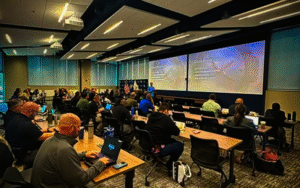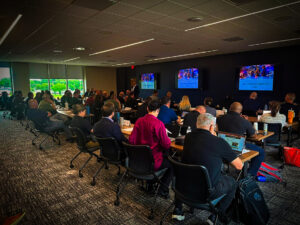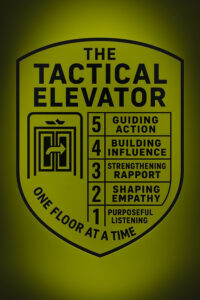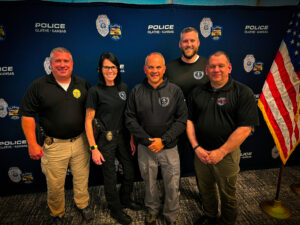Olathe, Kansas served as the gathering point for some of the region’s most experienced crisis negotiation team leaders during a two-day summit co-hosted by the Missouri Association of Crisis Negotiators (MACN) and the Kansas Association of Hostage Negotiators (KAHN). Designed specifically for those leading negotiation units, the summit offered an opportunity to explore leadership development, emerging tactics, and the evolving role of negotiation teams in high-stakes incidents.
Held at the Olathe Police Department’s training center, the summit featured a lineup of nationally recognized instructors and law enforcement professionals who shared both case studies and cutting-edge strategies.
Kicking off the summit was the Unit Chief of the FBI’s Crisis Negotiation Unit out of Quantico, Virginia. His presentation, “When the FBI Assists: Thresholds and Collaboration,” provided invaluable clarity on the FBI’s support role during local and regional crises. He outlined when federal assets are deployed, how local agencies can request assistance, and best practices for maintaining unified command during multi-jurisdictional events.
One of the standout presentations came from Michael Clyde of the Iowa State Patrol, who spoke on multi-agency response and integration. Drawing from real-life incidents, Clyde emphasized the need for clear communication plans and defined roles during chaotic incidents, especially when multiple jurisdictions are involved. His emphasis on proactive planning and interoperability resonated strongly with attendees.

Clyde and I were also able to reconnect outside of the classroom. We spent time brainstorming how to adapt new tactics to the current negotiation landscape—half-joking, half-serious—we even talked about incorporating elements of what we dubbed the “Tactical Elevator,” a step-by-step model for negotiators moving from Purposeful Listening to Guiding Action one floor at a time. It was a great moment of tactical creativity between professionals who’ve spent years in the trenches.

Dallas SWAT negotiator JD Byas delivered two powerful presentations. His first, on SWAT-Negotiator interaction, emphasized the importance of maintaining trust and communication with tactical teams. His second presentation revisited the July 7, 2016 ambush that killed five Dallas police officers. It was a sobering and emotionally raw session that reminded all attendees of the real-world consequences of leadership, teamwork, and preparation under fire.
I presented two sessions of my own. One focused on a case involving a mother taken hostage by a stranger, offering insight into rapid team deployment, evolving communication strategies, and interagency support during highly emotional standoffs. My second session addressed a critical leadership question: “How Do We Keep Our Negotiation Teams Relevant?” This talk emphasized continued training, community engagement, and demonstrating team value to command staff and elected officials.

Beyond the formal presentations, the summit offered an incredible opportunity for personal reconnection. I was able to catch up with members of my old negotiation team, many of whom I hadn’t seen since my retirement. Hearing their stories, sharing lessons learned, and laughing over things I had missed in the months since stepping away was a personal highlight of the event.
The summit also covered current legal updates affecting negotiation operations, including recent court rulings on crisis intervention, liability during prolonged standoffs, and negotiation team documentation protocols. Additionally, breakout discussions explored training innovations such as virtual simulations, integrated mental health response models, and media strategy for high-profile incidents.
The closing remarks echoed a common theme heard throughout the event: Negotiation leaders must be both guardians of tradition and architects of innovation. The relationships built and the ideas shared in Olathe proved that the crisis negotiation profession remains strong—and evolving. As discussions continue about making this an annual summit, it’s clear that the collaboration between MACN and KAHN is creating a blueprint for the future.
